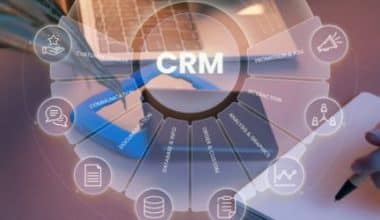A business owner faces numerous hurdles.
Whether it’s starting a firm from scratch or developing a long-term strategy for growth and expansion.
Distribution management has long been one of the difficulties faced by business owners. It is a task fraught with complexities and complexity.
But, exactly, what is distribution management? We’ll go through a complete description and provide you with a list of benefits that illustrate the necessity of a distribution management system for your organization.
What is Distribution Management?
The process of overseeing the transfer of goods from supplier to manufacturer to wholesaler or retailer and eventually to the end consumer is known as distribution management. There are numerous activities and procedures involved, such as raw material vendor management, packaging, warehousing, inventory, supply chain, logistics, and, in certain cases, blockchain.
What is a Distributor?
A distributor is a company that sells products to shops and other companies that sell directly to consumers. Consider a wholesale liquor distributor who sells alcohol to restaurants, grocery stores, and liquor stores.
A vegetable distributor who supplies lettuce, tomatoes, and other produce to restaurants is another example, as is a pharmaceutical distributor who supplies a variety of prescription-controlled medications to pharmacies.
What are the Four Distribution Channels?
Historically, there were three distribution channels:
#1. Wholesaler.
In this channel, goods are delivered from producers to wholesalers. booze distillers, for example, sell their brands of booze to wholesalers.
#2. Retailer.
Goods are distributed to retailers by the manufacturer or wholesaler. Designer clothing and accessories, for example, are distributed to higher-end retail chains such as Neiman Marcus, Nordstrom, and Macy’s.
#3. Distributor.
This channel transports items from the point of origin or producer to an authorized distributor. A Ford factory, for example, distributes different Ford makes and models to approved Ford dealerships for sale to consumers or company fleets.
#4. E-commerce.
This is the most recent and disruptive distribution channel, in which goods and services are virtually represented online and then sent straight to the buyer. E-commerce as a fourth channel has resulted in quick changes, forcing distributors to reconsider their previous tactics.
Logistics vs. Distribution
Logistics is the comprehensive planning and processes that go into the efficient supply and transportation of products. Supply management, bulk and shipping packaging, temperature controls, security, fleet management, delivery routing, shipment tracking, and warehousing are all examples of logistics activities and processes. It’s probably easiest to conceive of logistics in terms of physical distribution.
Distribution is a logistics management system that focuses on order fulfillment across distribution networks. A distribution channel is the network of agents and entities via which a product or service travels from its point of origin to a consumer.
E-commerce websites, wholesalers, retailers, and third-party or independent distributors are examples of distribution channels. Consumer or commercial packing, order fulfillment, and order delivery are all examples of distribution activities and procedures. In a nutshell, distribution can be classified as commercial or sales distribution.
What Is the Importance of Distribution Management?
Distribution management is first and foremost concerned with coordinating everything involved in getting goods to the buyer in a timely and waste-free manner. As a result, it has a direct effect on profitability.
What is a Distribution Network, and What are the Benefits?
A distribution network is a network of storage facilities and transportation systems that are linked together. It is built in accordance with a distribution plan that is intended to convey items from the manufacturer to wholesalers, retailers, or customers.
Distribution Management Challenges
- A multitude of disturbances might cause distribution issues. Severe weather disasters, raw material shortages (e.g., bad crop years), pest damage, and epidemics or pandemics are examples of natural disruptions. Riots, protests, conflicts, and strikes are examples of human interruptions.
- Transportation disruptions include transport vehicle breakdowns, maintenance downtimes, and accidents, as well as delayed flights and new or stringent transportation rules, such as those commonly encountered in trucking.
- Recessions, depressions, unexpected declines or spikes in consumer or market demand, new or changing fees or compliance costs, changes in currency exchange rates, and payment concerns are examples of economic challenges.
- Product recalls packaging concerns, and quality control issues are examples of product disruptions. Order revisions, shipment address changes, and product returns are examples of buyer interruptions.
Read Also: DISTRIBUTION STRATEGY: Types, Benefits, and How To Implement Them
What Factors Influence Distribution Management?
A variety of elements that can vary or affect distribution must be considered in distribution design and operation.
#1. Buyers’ requirements
The first is a shift in buyer demands. Buyers have varying amounts of demand for items throughout the year. For example, during the Christmas season, there is an increase in consumer purchasing of all types of things. As a result, businesses must plan for higher sales, orders, and deliveries.
#2. Shipping Optimization
Another issue that might have an impact on good distribution management is shipping optimization. For example, it is less expensive for a corporation to transport all of the items going to the same location together, such as in a single truckload, than it is to create many, less-than-capacity shipments to the same destination.
Shipping perishable goods efficiently is always vital for any firm that handles such commodities because any losses due to rotting will have a negative influence on profitability.
#3. Other considerations
Furthermore, there are a number of other elements that can have an impact on efficient distribution and must be considered by distribution management. They include freight delays caused by vehicle accidents or breakdowns, airport delays, and delays induced by extreme weather events.
Changes in government regulations governing transportation or shipping are another aspect for which distribution management teams must plan. Product recalls or packaging issues might also have an impact on distribution. Buyers might sabotage efficient distribution by making modifications to orders or the address for product delivery.
Because of the numerous aspects involved in distribution management, managers must not only prepare careful distribution plans but also a number of contingency plans to deal with any distribution problems that may arise.
Types of Distribution Management Strategy
#1. Mass
When a corporation wants to make its products available to as many individuals as possible, it employs the mass distribution approach. This method is frequently employed for fast-moving consumer goods (FMCG) such as food and beverages, as well as products with broad appeal. Its advantages include its ease of implementation and ability to reach a huge number of individuals. On the other hand, it can be difficult to target certain groups of people.
#2. Discerning
When a corporation wants to make its products available to a specific group of people, it employs the selective distribution approach. This method is typically utilized for high-end products that are not fit for widespread distribution.
The primary benefits of a selective distribution plan are that it allows a corporation to target specific categories of individuals while also allowing it to create relationships with its distributors. Its drawback is that it might be expensive to implement and maintain.
#3. Distinctive
When a corporation wishes to make its products available solely through a small number of distributors, it employs the exclusive distribution strategy. This method is frequently utilized for high-end or niche products. It has the advantage of allowing a corporation to create relationships with its distributors and manage the distribution of its products. Its downside is that it can be difficult to reach a large number of people.
The Benefits of a Distribution Management Strategy
A distribution management strategy has various advantages:
- It contributes to the timely and efficient delivery of products and services to clients.
- It contributes to better customer service by ensuring that products and services are supplied in a safe and secure manner.
- It contributes to lower distribution costs by ensuring that distribution networks are used efficiently.
The Drawbacks of a Distribution Management Strategy
A distribution management strategy has various drawbacks:
- It might be challenging to implement and manage.
- It can be expensive to maintain.
- Monitoring and updating might be time-consuming.
- It can be tough to switch distribution channels if they are ineffective.
How to Select a Distribution Management System
Choosing the correct distribution management system for your firm is heavily influenced by your company’s distribution goals and challenges, as well as the distribution models and channels it employs. However, as a general guideline, businesses should consider:
- Integration and compatibility with legacy systems are simplified.
- Flexibility and scalability
- Security
- Data management and analytics, including real-time data streaming and data exchange within ecosystems
- Adaptability refers to the system’s ability to accommodate the quick changes required to overcome obstacles or capitalize on new opportunities.
Top 5 Distribution Management Software
As e-commerce expands, the standards for speedy, economical delivery and customer expectations rise.
There has never been a greater requirement for supply chain agility, therefore creating a flexible distribution strategy is critical.
Fortunately, there are various distribution management tools on the market that may assist online firms in optimizing distribution and saving money while satisfying client expectations.
Among the best distribution management software are:
- Brightpearl
- M3 ShipBob Infor
- System DEAR
- The Sage 100 Cloud
The following is a high-level summary of the various solutions and the capabilities they provide:
| Distribution Management Software | Overview of Features |
| Brightpearl | Manages various activities throughout the supply chain Centralizes all your disparate sales channels Automates mundane distribution workflows |
| ShipBob | Offers access to an international fulfillment network and services. Enables 2-day shippingIntegrates seamlessly with dozens of third-party solutions. Offers multichannel retailing solutions |
| Infor M3 | Optimizes inventory and processes across multiple facilities. Offers multi-site, multi-language, and multi-currency support. Enables distribution forecasting and offers inventory recommendations Protects margins while streamlining supply chain operations |
| DEAR Systems | Automates time-consuming distribution tasks Manages sales across multiple channels Enables cost-effective distribution with data analytics Streamlines fulfillment for customer delight |
| Sage 100 Cloud | Automates several repetitive supply chain processes. Offers detailed insights on the distribution chain and sales demand |
What Constitutes Distribution Management?
The steps involved in getting the product from the manufacturer to the end customer are known as distribution management system elements, and they can include: supply chain, blockchain, logistics, a purchase order and invoicing system, vendor relationship management (VRM), customer relationship management (CRM), an inventory management system (IMS), a warehouse management system (WMS), and a transportation management system (TMS).
What Effect Does Distribution Management Have on Business?
Distribution management is an important part of the business cycle for both distributors and wholesalers, with how fast and efficiently a company can sell and distribute its products influencing corporate sales and ongoing profitability.
What Happens During Distribution Management?
Distribution management entails transporting finished items from a manufacturer or supplier to the end customer. Warehousing, inventory management, packing, shipping, and delivery are all part of the process.
What Is Distribution Management’s Role in Supply Chain Management?
- The distribution manager is in charge of getting items and services to customers.
- They collaborate with other marketing tasks such as product development to ensure that products and services fulfill client needs.
- The distribution manager is also in charge of monitoring the distribution budget and ensuring that distribution expenditures stay within the budget of the organization.
- The distribution manager collaborates with the supply chain process to guarantee that products and services are delivered to clients on time and in a cost-effective manner.
- They also collaborate with the logistics department to guarantee that items and services are delivered safely and securely to customers.
Conclusion
A distribution management strategy is a strategy used by a corporation to establish how its products will be supplied to customers. Distribution management strategies are classified into three categories: mass, selective, and exclusive.
A company’s distribution management strategy should be determined by its business goals and the products it offers.
A distribution management system can provide various benefits, including greater customer service and lower distribution costs. However, it can have a number of drawbacks, including being difficult to adopt and manage.
What are your thoughts on distribution management right now? Do you believe that is something your organization should do? Please let us know in the comments!
Related Articles
- WHAT IS A CHANNEL? Types of Distribution Channels
- MARKETING CHANNELS: Top 10 Digital Marketing Channels
- WHAT IS LOGISTICS? How Can Businesses Utilize It
- LOGISTICS MANAGEMENT: Definition and Types
- CONTENT MARKETING SERVICES: Best Services for Traffic, Rankings, & Sales






